
The photosynthesis fix
As world food needs rise, so does the need for faster, more efficient plant growth. Bypassing an error-prone enzyme is one way to do it.
By: Rachel Ehrenberg | Knowable Magazine

Science is more than labcoats: Clearing plant bottlenecks to feed the world with Katherine Meacham
You may be aware of bottlenecks in your work environment, but did you know that even plants have bottlenecks? What if there was a productivity coach for plants? Someone who could give them all of the secrets to being faster, greener and more productive? Someone who could whisper secrets into plant DNA so that they could transform sunlight into a bigger, better plant self…to be eaten by humans of course.
45 million dollars given to U of I research group
Researchers at the U of I are trying to end world hunger and they just got 45 million dollars to help them do it.
By: Jennifer Jensen | WCIA3 News

U of I researchers tackle world hunger
A research team from the University of Illinois Urbana-Champaign (U of I) is working on a project that might eventually change the world: tackling the growing issue of world hunger through increased crop yields.

Illinois biologists power up plant productivity
The BTN LiveBIG campaign is more than school or sports, it is the stories and the impact of innovation, research, and inspiration from all over the conference to make you proud to be apart of the Big Ten.
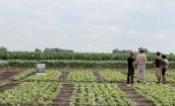
Research seeks solutions for climate change, hunger
Researchers at the University of Illinois are taking the basics of photosynthesis miles farther in Urbana-Champaign test plots and greenhouses — intervening in the process, through which plants use sunlight to produce energy, to create higher yields.
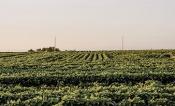
To feed the world, improve photosynthesis
By reworking the basic metabolism of crops, plant scientists hope to forestall devastating food shortages.
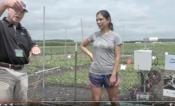
Video: 2017 Food & Fuel Field Day
Local ag communicator Stu Ellis covered the 2017 Food & Fuel Field Day that showcased RIPE's work to our friends, industry partners, and the media.
By: Stu Ellis | WCIA3 News
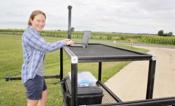
U of I crop research moves at light speed with FRED, WILMA
Don’t let the names fool you; FRED and WILMA are anything but Stone Age. FRED (field roving evaluation device) and partner WILMA (wagon for the investigation of leaves using multispectral analysis) to collectively gather much more information much faster than individual scientists clipping light sensors on leaves one at a time.
By: Kay Shipman | FarmWeek
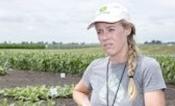
UI’s RIPE agriculture project aims to tackle growing problem
According to the U.N. Food and Agriculture Organization, farmers will need to produce 70 percent more food by 2050 to feed an estimated 9.2 billion people.That's a problem, said Donald Ort, associate director of the RIPE project at the University of Illinois, which is exploring ways to meet this challenge.
By: Ben Zigterman | News-Gazette
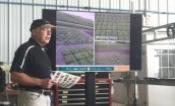
RIPE project shows off progress in photosynthesis research
RIPE Project Associate Director Don Ort discusses field trials that have shown increased biomass in tobacco plants from genetic modification of photosynthesis.

Adapting plants to global change
How do you feed 7 billion people? How do you grow that much food? That’s the question that confronts plant biologists. As the world population continues to grow, and change, researchers like RIPE Director Stephen Long are looking for more ways to grow more food, more quickly.

Cloudy days cost yield until scientists hacked photosynthesis
Throughout the growing season seemingly benign clouds pass over millions of acres of crops and inadvertently rob plants of their productivity, costing untold bushels of potential yield. Researchers recently reported in the journal Science that they have engineered a solution and increased the productivity of a crop in the field by 14- 20 percent—they believe this fix could be applied to staple food crops to help meet future global food demands.
By: Johannes Kromdijk | Katarzyna Głowacka | Stephen Long || The Science Breaker
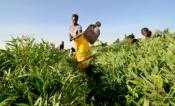
Research shows how to grow more cassava, one of the world’s key food crops
What root vegetable is toxic eaten raw but a hunger quencher when cooked, and provides both tapioca flour and the pearls in bubble tea? This question probably will stump many Americans, but is easy for people in the developing world.
By: Stephen P. Long | Amanda P. De Souza | Lynnicia Massenburg || The Conversation
